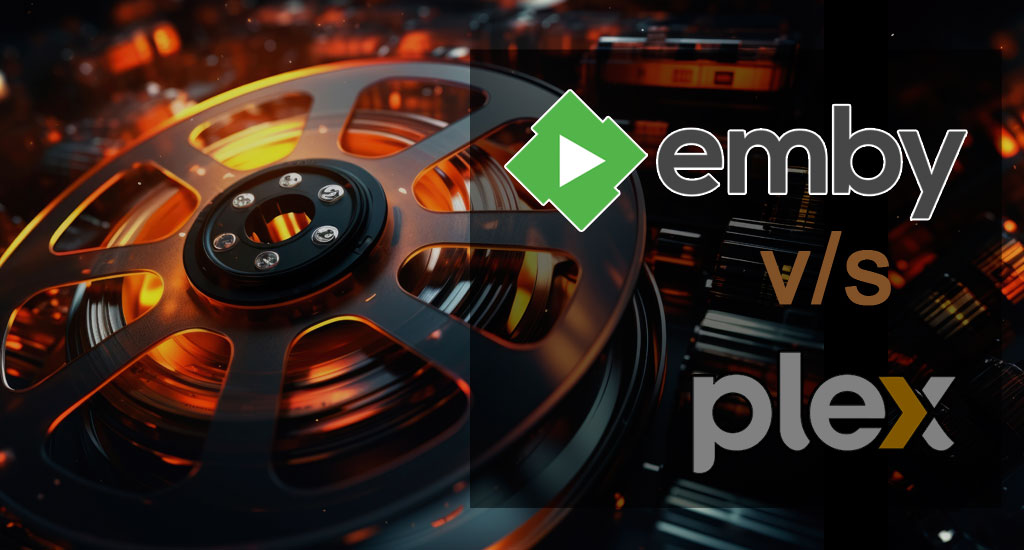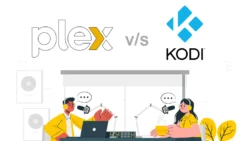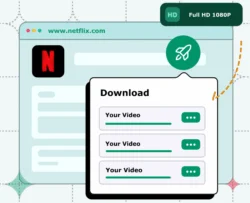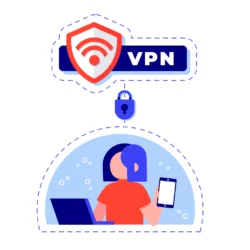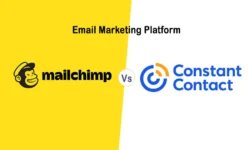For home media enthusiasts, the choice of a media server can make or break the experience of organizing and streaming personal collections of movies, TV shows, music, and photos. Two platforms dominate this space: Plex and Emby, both offering robust solutions to transform your digital library into a seamless, Netflix-like streaming hub accessible across devices. Whether you’re a casual user seeking simplicity or a tech-savvy tinkerer craving customization, understanding the strengths and trade-offs of these platforms is crucial. This article provides an in-depth comparison of Plex and Emby, exploring their features, usability, pricing, privacy, and performance to help you decide which media server best suits your needs in 2025.
Plex, born in 2007 as a fork of XBMC (now Kodi), has evolved into the market’s leading streaming media platform, known for its polished interface and broad compatibility. Emby, originally launched as MediaBrowser in 2008, offers a compelling alternative with a focus on local media control, privacy, and extensive customization. While both platforms share similar roots and goals, they cater to different audiences: Plex prioritizes ease of use and integration with streaming services, while Emby emphasizes flexibility and user-driven features. From transcoding performance to subscription costs, this guide breaks down the key differences to empower you to choose the right media server for your home entertainment setup.
Table of Contents
Emby vs Plex Feature Comparison
Media Management and Playback
- Plex: Organizes videos, music, photos, and podcasts into a sleek library with automatic metadata fetching from sources like IMDb and TheTVDB. Its playback engine supports a wide range of formats, with robust transcoding for compatibility across devices. Plexamp, a dedicated music app, offers advanced audio features like a 10-band EQ and gapless playback (some features require Plex Pass).
- Emby: Similarly organizes media with metadata fetching and supports a broad range of formats. Emby’s playback is powered by FFmpeg, which some users praise for its transcoding efficiency, particularly for newer codecs like AV1. Unique features include Cinema Mode (playing movie trailers or intros before playback) and a Cover Art plugin for customizable media presentation.
Live TV and DVR
- Plex: Supports live TV and DVR with compatible tuners (e.g., HDHomeRun, AVerMedia, Hauppauge), requiring a Plex Pass for full functionality. It offers over 200 free live TV channels and a program guide for easy navigation.
- Emby: Provides live TV and DVR support, free via the web app but requiring Emby Premiere for other devices. It natively supports HDHomeRun and Hauppauge (Windows) tuners, with additional tuners available via plugins. Emby’s DVR is highly customizable, allowing users to set recording schedules and manage libraries.
Additional Features
- Plex: Integrates with streaming services (e.g., Netflix, Hulu) for a unified interface, offers news recommendations via machine learning, and supports casting to Chromecast and voice control via Alexa. Offline syncing and hardware transcoding are Plex Pass exclusives.
- Emby: Emphasizes customization with community-driven plugins and custom CSS support for theming. It offers strong parental controls (free, unlike Plex), cloud syncing (Premiere required), and casting to Chromecast, including 4K devices. Emby’s community forums provide active support for advanced setups.
User Interface and Ease of Use
- Plex: Plex’s interface is its standout feature, offering a polished, minimalist design that feels like a premium streaming service. It’s intuitive for beginners, with straightforward navigation and minimal setup (~5 minutes). However, customization is limited to basic tweaks like colors or layout.
- Emby: Emby’s interface is functional but less refined, resembling an older media center aesthetic. It compensates with extensive customization options, such as custom CSS and community themes (available on GitHub). Setup is slightly more complex due to advanced options (e.g., metadata extraction settings), which may overwhelm non-technical users but appeal to tinkerers.
Installation and Compatibility
- Plex: Installation is streamlined, with Plex automatically configuring most settings. Adding a media library takes seconds, and the server runs on Windows, macOS, Linux, NAS (Synology, QNAP), and Docker. Client apps are available for nearly every device, including Roku, Fire TV, Apple TV, PS5, Xbox, smart TVs, and even niche platforms like Facebook Portal.
- Emby: Installation is straightforward but involves more configuration choices (e.g., chapter image extraction), which may require tweaking for optimal performance. It supports Windows, macOS, Linux, NAS, and Docker, but Docker images are updated less frequently than Plex. Client apps cover most platforms (PS4, Xbox, NVIDIA Shield, smart TVs), but some devices (e.g., PS4) rely on the web interface instead of native apps.
Transcoding Performance
- Plex: Uses a proprietary encoding system (likely wrapping FFmpeg) with excellent hardware transcoding (Plex Pass required). It handles 4K HDR and various codecs efficiently, ensuring smooth playback on low-powered devices. Plex’s transcoding is optimized for broad compatibility.
- Emby: Relies directly on FFmpeg, which some users report outperforms Plex in specific scenarios (e.g., AV1 to HEVC transcoding on NVIDIA Shield 2019). Hardware transcoding is free on some setups but may require Premiere for full functionality. Emby’s transcoding is highly configurable, appealing to advanced users.
Pricing and Subscriptions
- Plex: Free for basic local streaming (no transcoding needed if media is compatible). Plex Pass ($4.99/month, $39.99/year, or $119.99/lifetime) unlocks hardware transcoding, DVR, offline syncing, parental controls, and premium features like Plexamp’s advanced audio settings.
- Emby: Free for local streaming via web app, Roku, Apple TV, and Samsung Smart TVs. Other devices may require a one-time App Unlock fee or Emby Premiere ($4.99/month, $54/year, or $119/lifetime) for remote streaming, DVR, and hardware transcoding. Users note no additional client fees after purchasing Premiere.
Privacy and Data Security
- Plex: Collects user data, telemetry, and watch history, which it may sell, raising concerns for privacy-conscious users. Remote access relies on Plex’s authentication servers, requiring an internet connection even for local setups in some cases.
- Emby: Does not collect user data or telemetry, making it a better choice for privacy. Remote access is managed locally without external authentication servers, allowing fully offline operation if configured properly.
Device-Specific Considerations
- NVIDIA Shield Users: Both support the Shield, but Emby excels in transcoding newer codecs (e.g., AV1 to HEVC), while Plex offers a more seamless native app experience.
- NAS Users: Plex has broader NAS support (Synology, QNAP, Western Digital), with dedicated packages and frequent updates. Emby supports NAS but may require manual configuration on some systems.
- 4K HDR Streaming: Both handle 4K HDR well, but ensure your server hardware supports transcoding. Plex’s proprietary system is more plug-and-play, while Emby’s FFmpeg-based transcoding offers more control.
Pros and Cons
Plex
- Pros:
- Polished, beginner-friendly interface.
- Broadest device compatibility, including niche platforms.
- Streaming service integration and free live TV channels.
- Plexamp for music enthusiasts.
- Extensive tuner support for live TV/DVR.
- Cons:
- Paywall for advanced features (transcoding, parental controls).
- Data collection and telemetry.
- Reliance on external servers for remote access.
Emby
- Pros:
- Highly customizable with plugins and CSS theming.
- Free parental controls with detailed settings.
- Privacy-focused, no data collection.
- Strong transcoding performance (especially for modern codecs).
- Unique features like Cinema Mode.
- Cons:
- Less polished interface.
- Slightly more complex setup.
- Fewer native client apps compared to Plex.
- Some features locked behind Premiere.
Which Should You Choose?
- Choose Plex if you prioritize ease of use, a polished interface, and broad device support. It’s ideal for beginners, music lovers (via Plexamp), or those who want streaming service integration and free live TV channels. However, be prepared to pay for a Plex Pass for advanced features and tolerate some data collection.
- Choose Emby if you value customization, privacy, and local media control. It’s better suited for tech-savvy users who enjoy tweaking their server, need free parental controls, or prefer a platform that doesn’t track data. Emby’s Cinema Mode and plugin ecosystem are bonuses for enthusiasts.
Alternative to Consider: Jellyfin
If neither Plex nor Emby fully meets your needs, consider Jellyfin, a free, open-source fork of Emby. It offers similar features without paywalls or data collection, making it ideal for privacy-conscious users willing to handle more manual setup (e.g., reverse proxy for remote access). However, it’s less polished than either Plex or Emby.
Conclusion
Plex and Emby are both powerful media servers, each with distinct strengths. Plex shines for its user-friendly design and ecosystem integration, making it a go-to for casual users and those invested in its subscription model. Emby appeals to users who prioritize privacy, customization, and unique features like Cinema Mode, especially if they’re comfortable with a slightly steeper learning curve. Your choice depends on your priorities—ease of use and broad compatibility (Plex) or flexibility and privacy (Emby). For specific setups (e.g., NAS, 4K HDR, or budget constraints), test both, as they offer free tiers, and consider Jellyfin for a fully free alternative.
